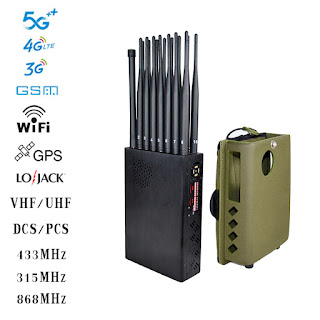Jammers block prisoner communications
In a recent report, the Justice Department has introduced a method to combat criminal activities in correctional institutions: a successful test of a signal jammers that blocked mobile signals from unauthorized phones in a Maryland prison.
The news rapidly reached correctional facilities. For Brian Sterling, the head of the South Carolina Department of Prisons, this revelation solidified his opinion that jamming technology is the most efficient and least expensive means to address the issue of mobile phone smuggling into prisons.
A cell phone jammers is a compact and economical device that sends out a continuous signal to an antenna, effectively preventing any mobile phone from making or receiving calls. These jamming devices are generally quite affordable, with a variety of options available online, priced from $119 to $650.
Prison authorities have long suspected that inmates employ a range of creative tactics to bring phones into correctional facilities. In South Carolina, Sterling reported that couriers would traverse wooded paths, tossing backpacks containing prohibited items over the prison fences; moreover, drones would patrol the prison grounds, releasing phones to inmates during moments when guards were absent.
We must ensure that we are equipped with every tool necessary to tackle this conflict.
Sterling has constructed 50-foot nets around his facility, removed trees to make it more difficult for drones to flee after being released, installed high-level metal detectors, and provided support to the Justice Department in multiple prosecutions of staff for cell phone smuggling.
Sterling expressed in a phone interview, "We are facing a war. It is imperative that we gather all the tools required to combat this struggle."
The incident that led to Sterling's awakening was the shooting of one of his correctional officers. On March 5, 2010, Captain Robert Johnson was at his residence in Sumter, South Carolina, when a gunman broke in and shot him six times at close range with a .38-caliber revolver. The individual responsible for this act was Robert Odell Brown, 33, who was killed in February during a fight among inmates at the Lee County Correctional Facility in Bishopville, South Carolina.
The assault was facilitated by the Lee County Correctional Facility via a cell phone. In response to this, Sterling has been working diligently to deploy jammers in correctional institutions.
An additional alternative to jamming technology is the use of small box antennas, which are reasonably priced at about $400 and can cover a block with around 10 units. These boxes need to be wired together, but once the system is established, all phones will automatically connect to these antennas, ensuring that signals do not escape the enclosed area. Levitan stated that this method can effectively block calls without the need for the forceful approach of jamming technology, as long as the facility keeps track of the equipment.
Findings from the study suggest that the operational costs of controlled access systems and jamming are comparable, with controlled access offering greater versatility as a cell phone blocking mechanism. The installation of jamming technology in correctional institutions would demand a precision-based system, which is associated with higher costs.



Comments
Post a Comment